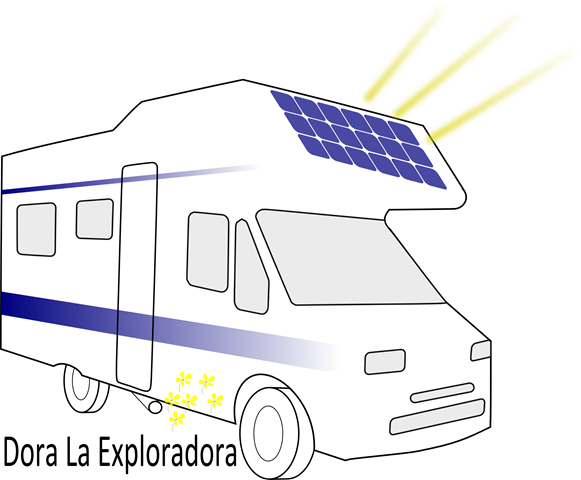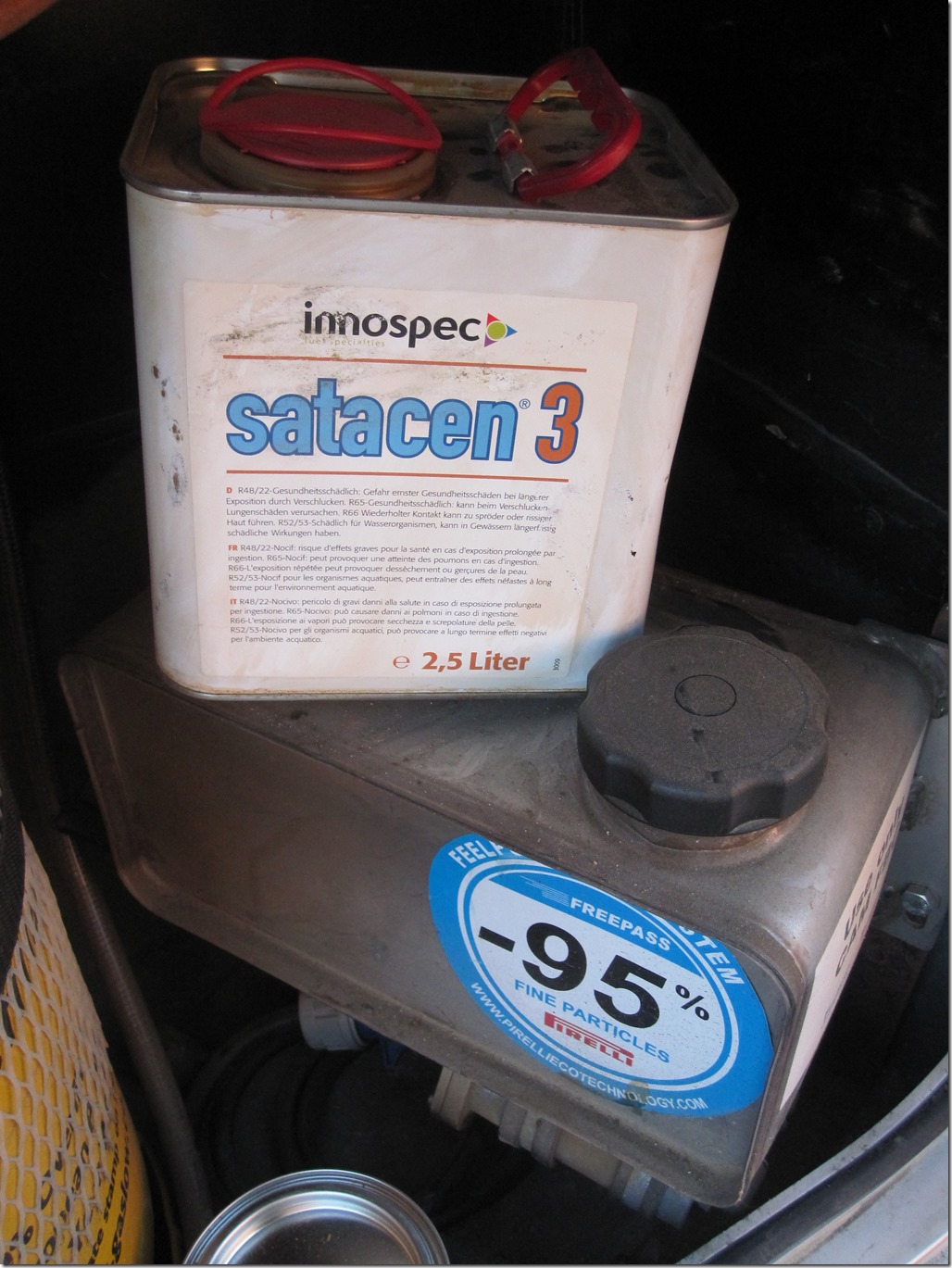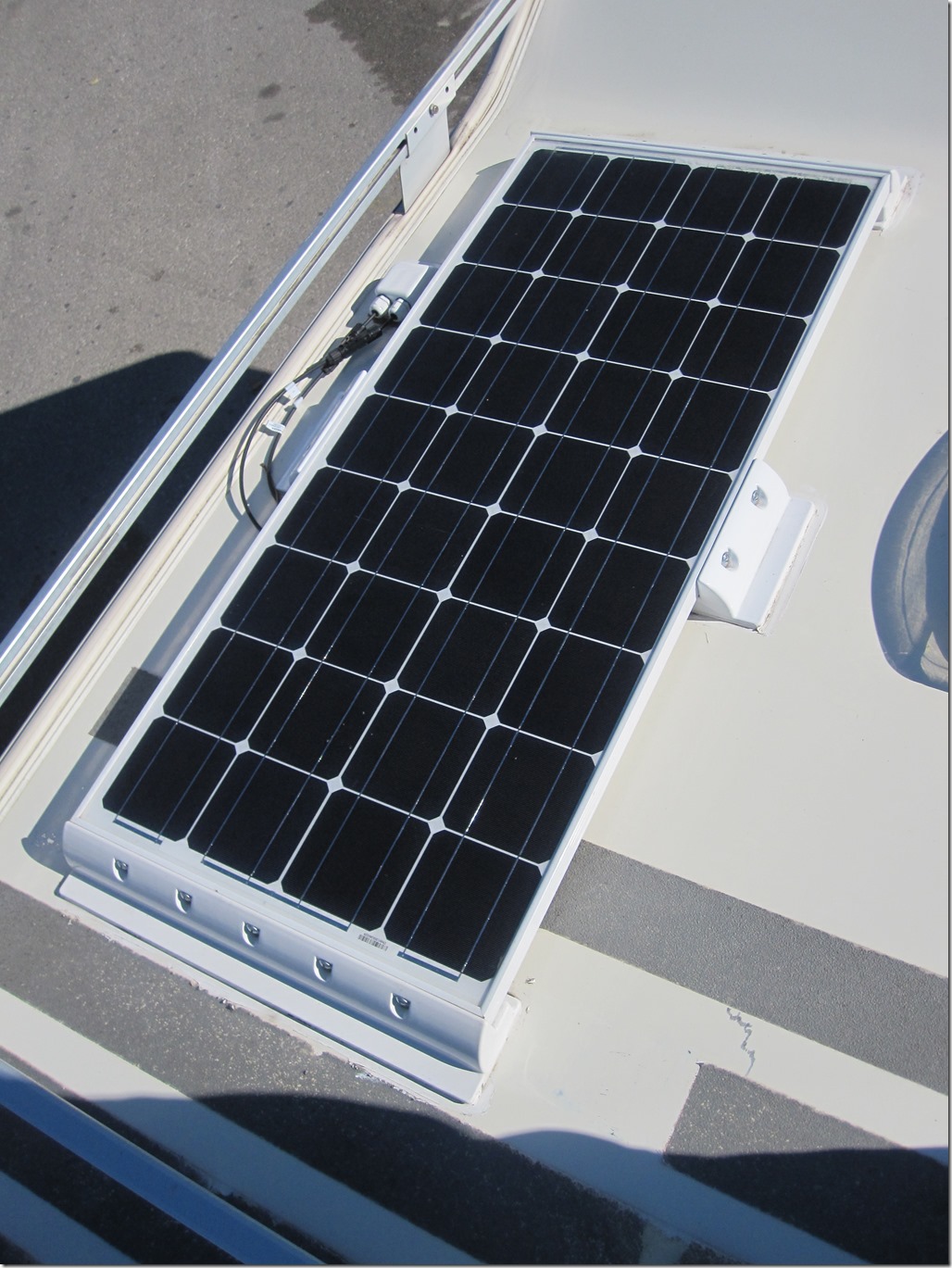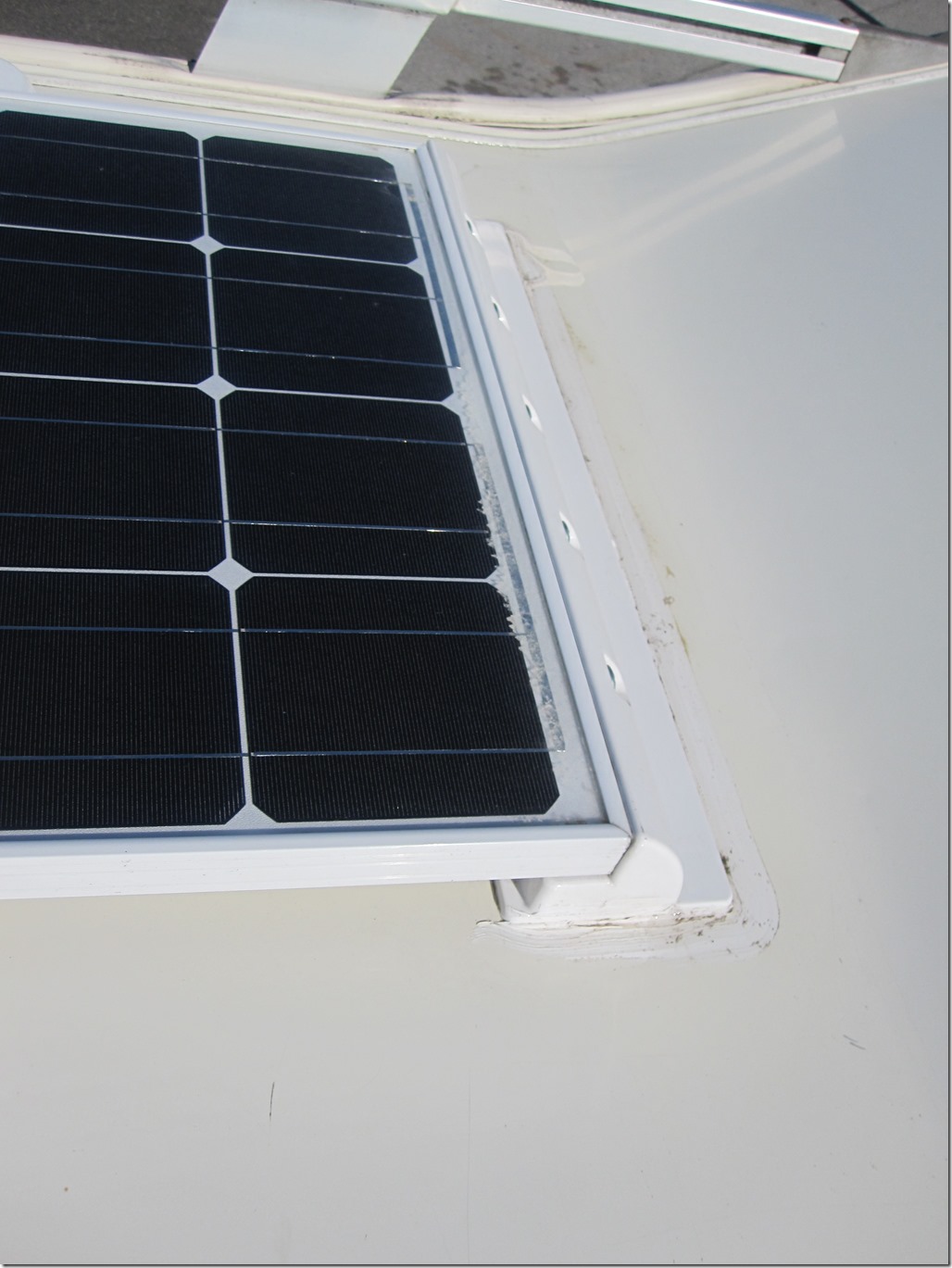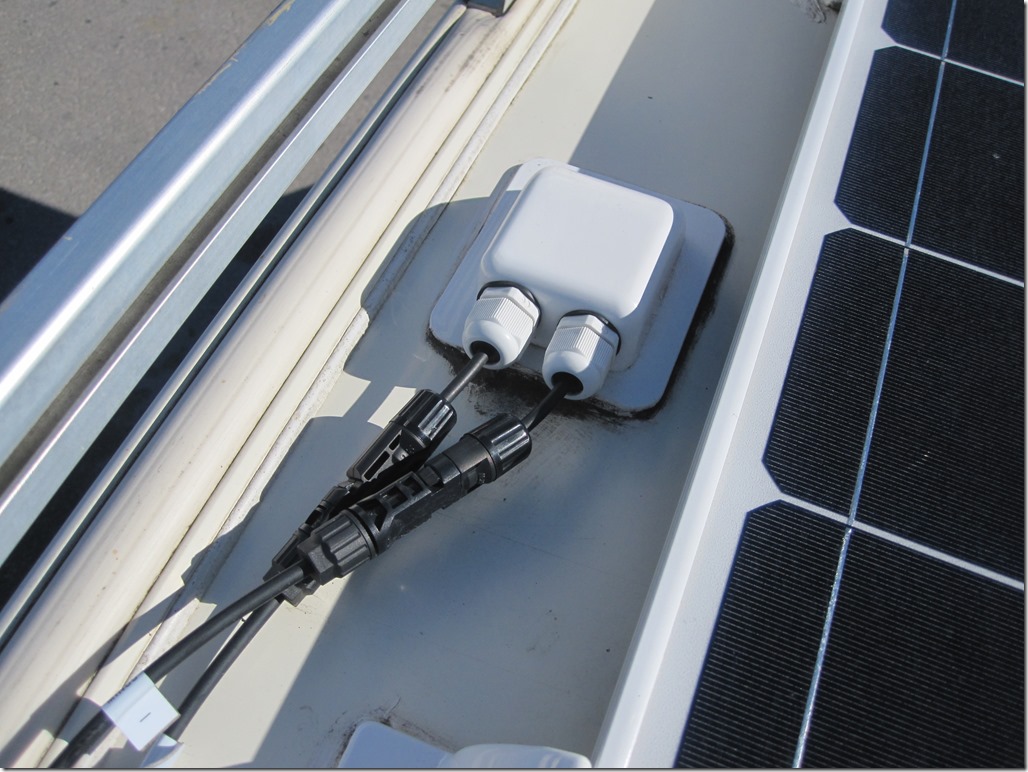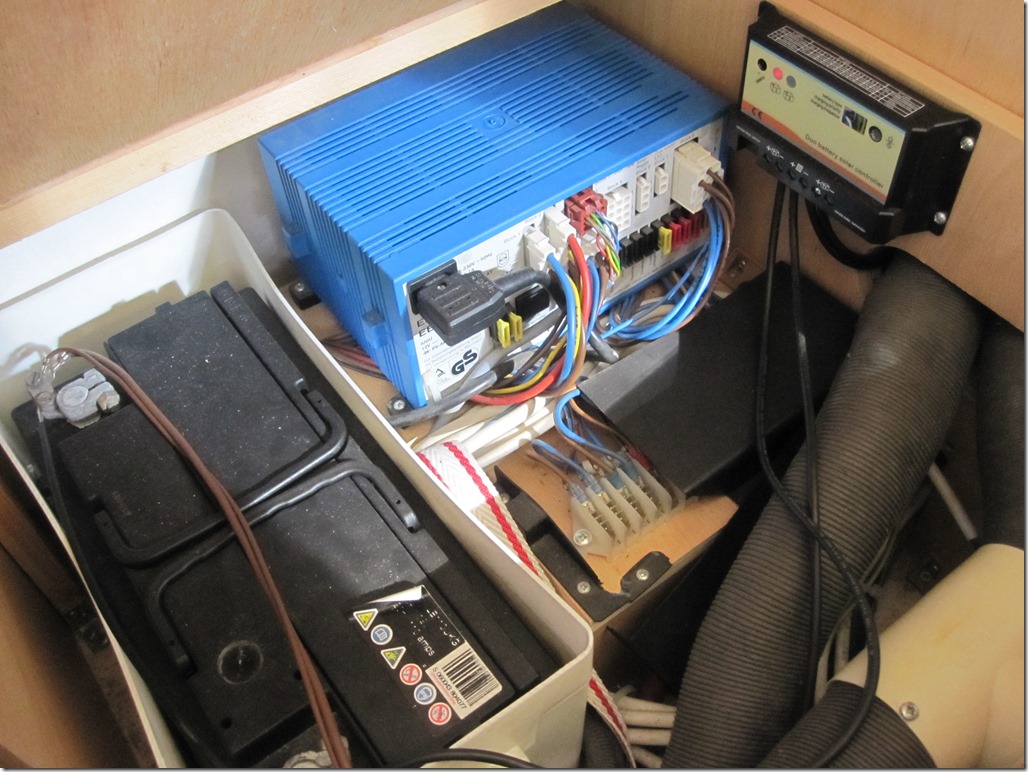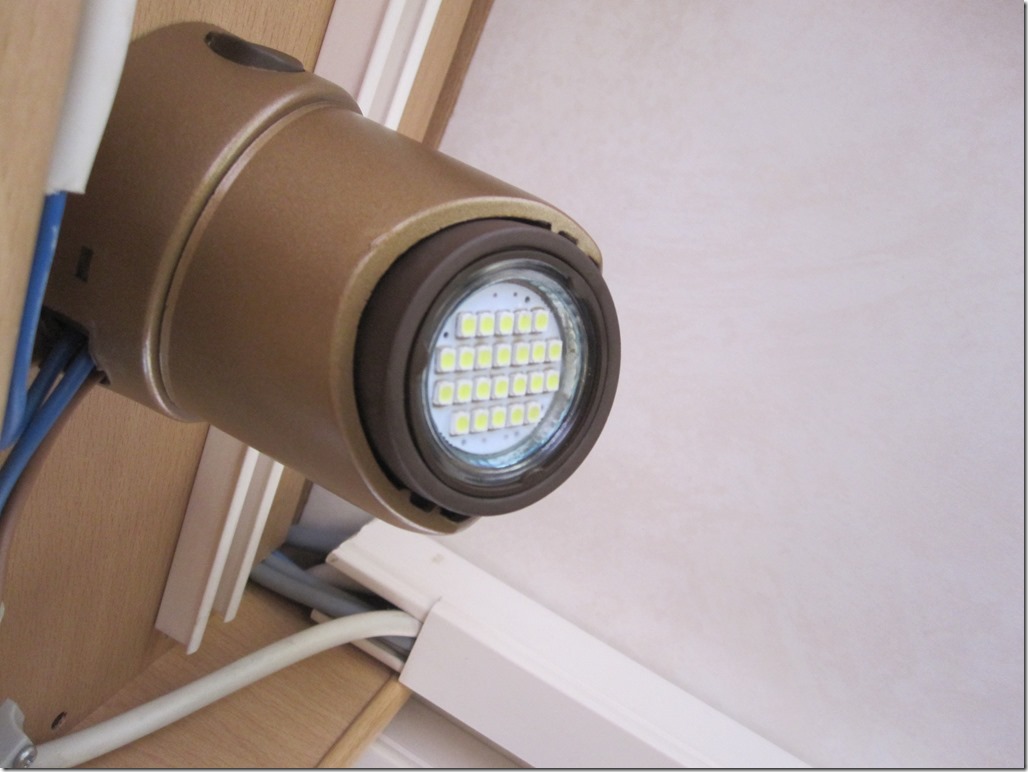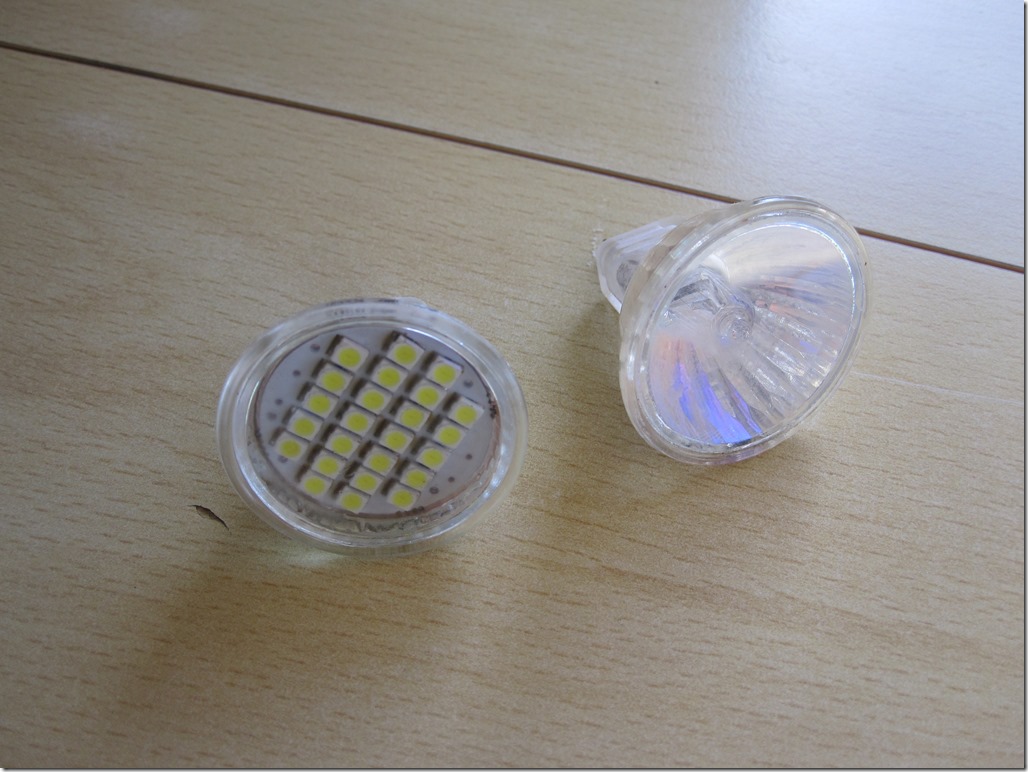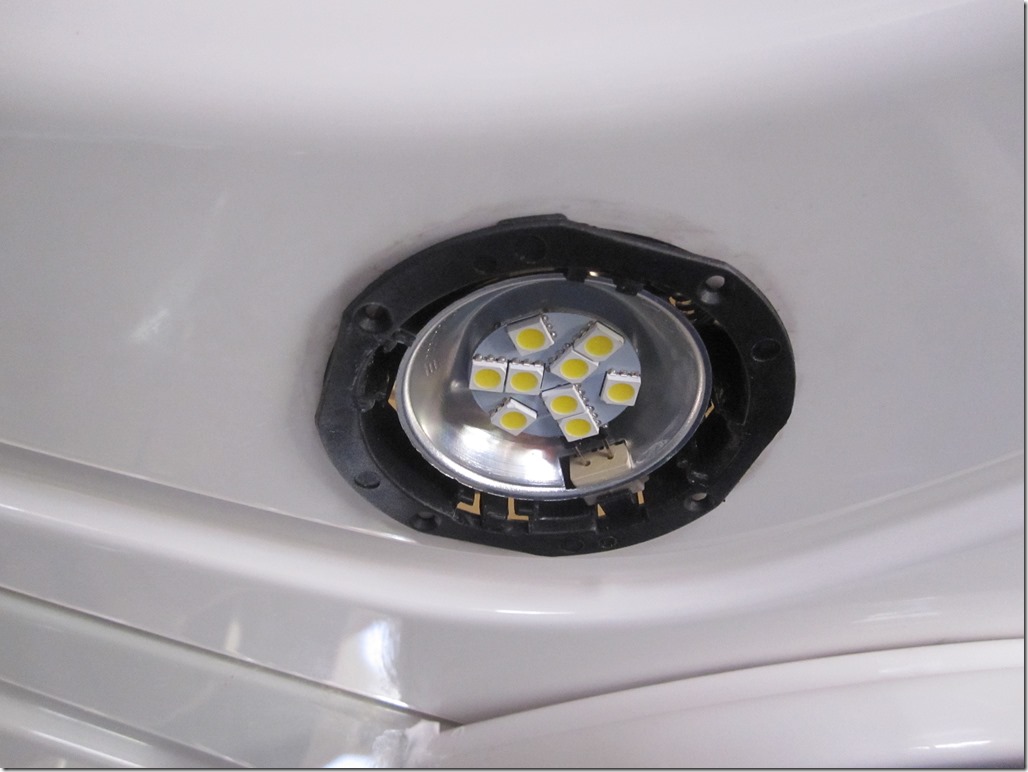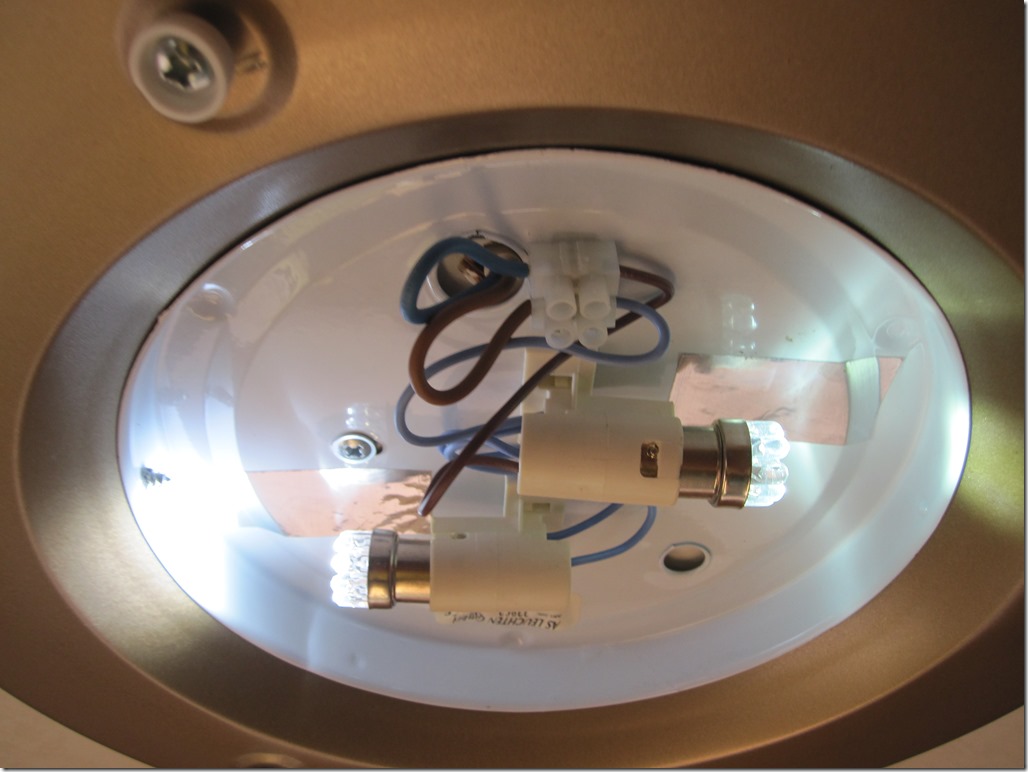She may be old, but we have done our best to make Dora sustainable.
One of the first aspects of motorhoming is that you really become aware of what you consume, and for this reason alone everyone should be compelled to it it for at least a month. Every aspect of your life is impacted from living out of 7 sqm of space which is mobile. Water, gas, electricity, waste, grey water, black water and storage. For a short holiday, probably no problem, but for a year or more, you get to be a little more aware.
We have already talked a little bit about water on previous posts (LINKS) and we have our showers down to an art of water frugality as this is where you consume the most, suffice it to say, you can get away with about 30-40 litres per day (as a couple) without compromising living. But that day of water equates to 40 kilos which you may be dragging around with you, and every kilo means less kilometres per litre of diesel. Brim her with water and you pay with it via mileage efficiency.
So the art has to be balancing. We like to be away for it all, in the mountains and we can live off grid in Dora for three days no problem before we need to replenish water. It is the water that will always go first. As Bear Ghrylls would say, like survival, you can survive ages without a Lidl, but days without water.
And another thing that comes to mind, that you become aware of, as a motor homer, living like this, the amount of toxic crap that surrounds us. This can’t just be disposed of on the land, which is part of our culture. That cleaning liquid that kills 99.9% of all germs, does do just that, and would kill fish, insects and further down the food chain, foxes, rats, birds and humans, if enough of it got about. There are supposedly soaps you can use in a stream that do the environment no harm, which begs the question, why aren’t all soaps like that, and washing up liquids and household cleaners. Bare in mind that even at home all that stuff end in the drain, and from there who knows where it goes.
Maybe that is getting a bit off topic of why Dora is or is not sustainable.
You could argue that we have given her a new lease of life, and although she may be past her prime, old, inefficient and dirty, she has enough embodied energy in her that extending her life is a good thing. I wish we could construct an argument to agree, but quite frankly a newer, more efficient model would have been better, we just didn’t want to spend £50k.
So once we have put that past us what has she got? For a start she came with this eco friendly system to remove all the rubbish from diesel. It allowed her to travel into London, a low emission zone, and it is what many older trucks have fitted. It filters out all the soot and then re-burns them. It is a system by Pirelli called Feelpure. From a users perspective so far it has been really simple, although we wish we had been properly instructed on how it works and what we needed to do. Essentially the two thing we have needed to do so far; one is fill a small tank adjacent to the gas cylinder with a special oil and two press a red button when she hadn’t cleared the soot properly from the filters.
All her expensive stuff underneath, lots of cables, pipes and the filter that hooks into the exhaust system.
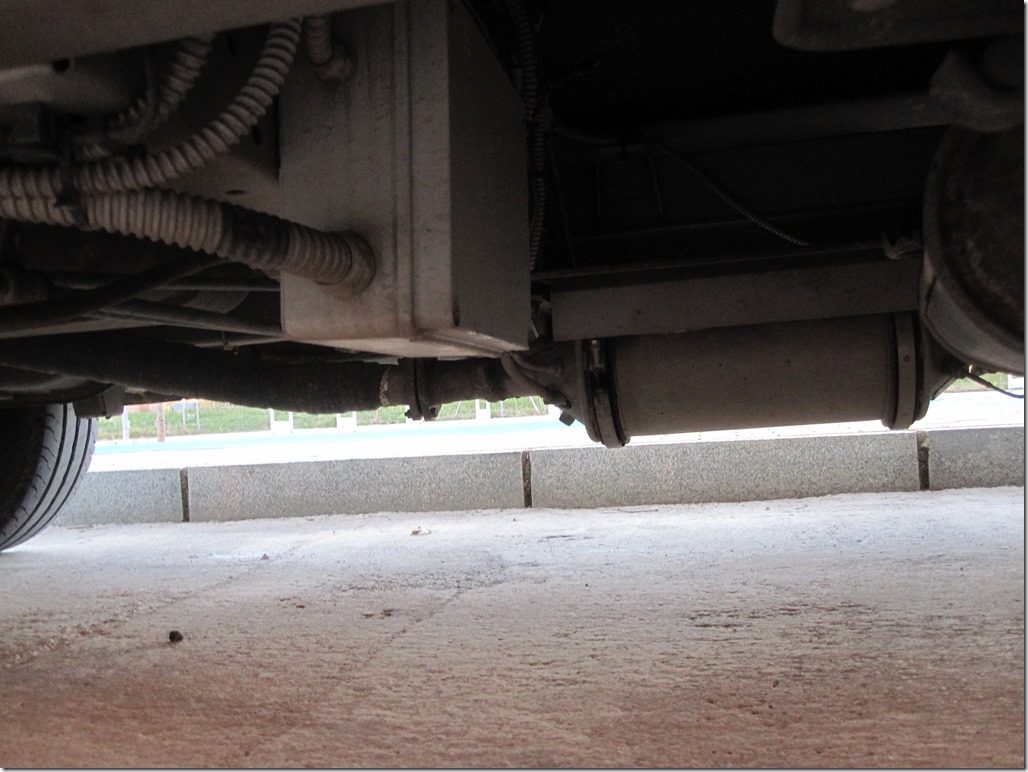
The tank and her special oil- difficult to find abroad.
I presume this was a really expensive system to install. The likelihood is we will not get a great deal of benefit in that we are not likely to be going to low emission zones in the next year, however these zones are increasing rapidly, beware fellow motor-homers. Maybe the next owner of Dora will truly reap the benefits. We do however get the satisfaction that we are not emitting lots of crap into the atmosphere, which is what we should focus on.
The next thing we did was to put a solar panel on her.
We used a Baird 100w panel.
And we installed it ourselves. Was it easy? Yes, relatively, for anyone with a bit of DIY and electrical experience. The kit is fairly well explained, and all you need in addition is;
1 x 10mm drill but for Metal & 1 x 10mm drill bit for plastic (which can obviously be the same thing!)
10 x bolts with nuts M8 x 38mm with locking washers- I used 50mm because I couldn’t get 38mm from B&Q
Sika® Aktivator-205 to clean all surfaces and you only use 30% sop someone need to come up with a recycling/ swapping campaign
SikaFlex 552 Adhesive 300ml- to stick it to the roof.
This is the first bit that got me researching and pondering. In the US they have no qualms about bolting stuff through their roofs. Drill, bolt and copious amounts of sealant, and as an architect, this would seem a great solution. In Europe this is frowned upon, and I also have some sympathy.
When we bought Dora, one thing we noticed was that the aluminium covering, while on her sides was tightly bonded, on her roof seemed to have de-bonded, was not stuck properly. Later research determined that roofs are not usually bonded to allow for the contraction and expansion caused by heating from the sun. Good point, sensible design solution, so maybe our yankee friends haven’t realised the error of their ways!
This still left me with a bit of trepidation, I must admit. The roof was a bit slack, and we were gonna glue the PV panel to aluminium with a bit of adhesive and then travel at 90 kms per hour down the motorway. I saw the PV panel on the hard shoulder with a neatly ripped rectangle of aluminium from Dora’s roof attached to it. It hasn’t happened yet.
Clean all areas where the plastic brackets will be bonded to the roof. Use Activator.
The brackets can come profiled so the wind passes over them, rather than trying to lift the panel off the roof. Make sure you get the right kit.
It is fine, Sikaflex is brilliant, do not worry. Just clean it well first with the Sika® Aktivator which costs as much as the adhesive!
The drilling through the roof into the wardrobe was also nerve-wracking. Who wants to make a hole in the roof of their motorhome , but it went perfectly with no leaks, and wiring was a doddle. We went for the dual feed, in case we wanted to connect the main battery or put in a supplement habitation one, so far we have not.
I used a 4mm pilot hole drill upwards from my wardrobe to ensure I had the right spot internally. I then enlarged this from the roof with the 10mm drill, carefully removing any sharp edges from the aluminium that could fray the wires. The plastic cover is then bonded to the roof. Allow 24 hours to dry properly. The glands are tightened around the wire to create a waterproof seal.
The first time on the roof was also a bit scary. Not the height, the thought of falling through, doing her damage. This is German engineering however, fear not.
The wiring was easy. Connect two wires to the positive and negative of the habitation battery, and then connect the PV. Various LED show what she is doing at any time. A more sophisticated controller would give more accurate readings of output.
So the PV is brilliant, especially in sunny weather, and quite good on a cloudy day.
Next upgrade was to take out all those old bulbs, halogen etc., and replace with LED’s. So easy and cheap, you would be nuts not to do it. This isn’t so much about sustainability, just making better use of what you have. Those LED’s might use 8 watts rather than 32 watts, you get 4 times the amount of light.
You just need to buy the correct light for your fitting. We had three types. They are very cheap from eBay as Chinese imports. They are about £1.50 each and so far have been reliable. You can also buy them from amazon.
Cabin lights- the more LED’s you have (the yellow squares) the brighter it is.
Halogen vs LED
The bathroom lights- we took 2 out as we didn’t want it so bright.
And the lamp over the table- we rarely use this.
What we didn’t do;
Buy an inverter for a hair dryer (although we thought about it) we got our hair cut short.
Buy a generator, too much noise and not necessary. Those that have them are social pariahs.
GDR

